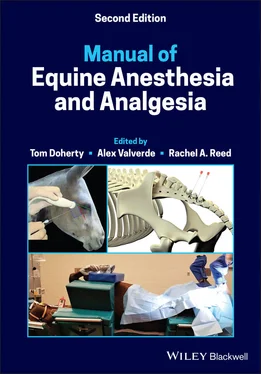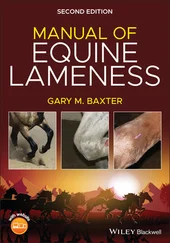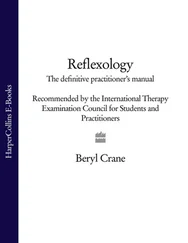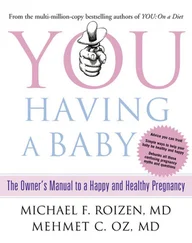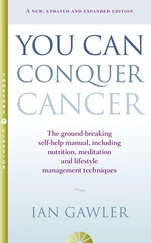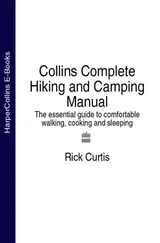1 ...7 8 9 11 12 13 ...39 Platelet count >1 000 000/μl.
Thrombocytopenia (platelet count <75 000/μl)
Increased platelet destruction:
Immune mediated.
Causes include:Equine infectious anemia, anaplasma phagocytophilum.Drugs, toxins, snake bites.
Increased use:
Hemorrhage.
Disseminated intravascular coagulation.
Decreased production:
Myelosuppressive drugs (e.g. phenylbutazone).
Bone marrow disease.
Idiopathic.
II Blood chemistry interpretation
Point of care (POC) analyzers have made the evaluation of chemistry, electrolyte, and blood gas values available rapidly as stall‐side or immediate vicinity testing (see Figures 2.1and 2.2). Figure 2.1 Bench top point‐of‐care blood analyzer,Source: NOVA Biomedical. Figure 2.2 Stall‐side point‐of‐care blood analyzer,Source: Abbott point‐of‐care iSTAT system.
Specific reference ranges from the laboratory or analyzer conducting the analysis should be utilized.Reference ranges for foals should be used based on age.Reference ranges for donkeys (asses, burros), mules, and hinnies should be used accordingly.
Also called creatine phosphokinase (CPK).
The reference range for the horse is 108–430 U/l.
CK is a specific indicator of muscle damage.It is a “leakage” enzyme released secondary to myocyte damage or death.
Serum concentrations increase quickly following myocyte damage.In contrast to aspartate aminotransferase (AST) concentrations which increase more slowly and persist for longer (see below).
CK has a short half‐life (hours); thus, serum concentrations decrease quickly after an episode.
Urine will be positive for blood on test strips if myoglobin is present.Myoglobin and free hemoglobin have peroxidase‐like activity, which results in oxygen liberation from organic peroxide in the reagent strip, causing a color change in the strip.The urine may be “coffee” colored.
Mild increases in CK (1000–5000 U/l) may result from:
Recumbency, trailer ride, recent exercise, or intramuscular injections.
Consider a diagnosis of mild exertional rhabdomyolysis (ER) and/or polysaccharide storage myopathy (PSSM) if the above conditions are not applicable.
Moderate (~5000 U/l) to severe increases in CK (>10 000 U/l):
Severe cases of ER may have associated CK values >100 000 U/l.
These high values may be associated with a traumatic event, but may occur following general anesthesia.
Note: Because myoglobin may cause renal tubular damage, treatment may be indicated.
B Aspartate aminotransferase (AST)
AST is a “leakage” enzyme released secondary to myocyte or hepatocyte damage or death.Small amounts are also present in myocardial cells.
Increased AST values in horses are most commonly associated with skeletal muscle damage.The reference range for the horse is 160–400 U/l.
Serum AST may also increase significantly in horses in early training.
AST values in foals may be greater than adult values for many months.This increase may be related to muscle growth.
Small amounts are present in RBCs.Thus, hemolysis can cause small increases in serum AST.
AST in serum increases more slowly (peak 6–12 hours) than does CK after muscle injury.
It has a long half‐life (~seven days) in horses compared to other domestic species, and serum concentrations fall slowly (three to four days to return to normal) after an episode.Note: AST activity will remain increased after CK activity has returned to normal.
AST values should be interpreted in association with CK and other liver enzymes (Sorbitol (Iditol) dehydrogenase [SDH], Gamma glutamyl transferase [GGT]).
Serum AST activity can also increase with in vivo or in vitro hemolysis.
C Gamma glutamyl transferase (GGT)
GGT resides in the cell membranes of all somatic cells, but its greatest activity is in biliary epithelial cells, pancreatic acinar cells, and renal tubular epithelial cells.
GGT is a cell surface glycoprotein and is a liver canalicular enzyme, and it is induced by dilation of the biliary tree.
It has multiple functions including the regulation of the anti‐oxidant glutathione.
Increased GGT activity in serum is usually an indication of hepatobiliary toxicity, especially cholestasis.
Bile accumulation (cholestasis), biliary hyperplasia, and some drugs (e.g. phenobarbital, furosemide, phenytoin, and cimetidine) increase serum GGT activity.
GGT has a long half‐life (approximately three days), thus serum concentrations fall slowly after an episode.
Chronic liver disease associated with hepatocyte destruction, fibrosis, and biliary hyperplasia are associated with severe increases in GGT.
Right dorsal displacement of the colon causes an increase in serum GGT activity by impeding the outflow of bile.
Proximal enteritis causes increases in AST and GGT activity secondary to ascending infection of the biliary tract and/or liver damage from systemic effects such as endotoxemia and hypovolemia.
Reference range: Adult horses 6–30 U/l.
The normal range for burros, donkeys and asses may be 2–3 times higher, and mules and hinnies may be two times higher than values for horses.
Foals have a higher reference range than adults for the first one to two months of life.Unlike in ruminant neonates, this is not due to ingestion of colostrum as GGT activity is low in mare's colostrum.The increased serum GGT activity in foals in the first month of life seems to be due to endogenous sources.Note: Idiopathic increases in GGT occasionally occur in young, apparently healthy Thoroughbred horses. The cause is unknown. These horses may exhibit poor performance.
GGT is not excreted by glomerular filtration; thus, its presence in urine indicates acute damage to tubular epithelial cells.
GGT appears early in the urine when there is acute tubular damage, and this occurs prior to the development of azotemia.
However, urinary GGT activity decreases quickly after an acute episode of tubular injury, even in the presence of ongoing tubular impairment.
To allow for the effect of urine flow, GGT concentrations in the urine are generally expressed as a ratio to urinary creatinine concentrations.
D Alkaline phosphatase ( ALP )
ALP is present in biliary epithelial cells, hepatocytes, bone, placenta, and intestine.
The reference range for the horse is 119–329 U/l.
Activity originates from induction similar to GGT, but it is not liver specific.However, most serum ALP is derived from the liver, and the remainder is from bone, and a small amount from intestine.
Increase in ALP activity indicates cholestasis from intra or extrahepatic causes.But increases are more likely if the obstruction is extrahepatic.
Intestinal lesions can also increase ALP activity.
Bone growth causes an increase in serum ALP activity.
ALP in serum is highest at birth and decreases over the first month to adult range by two to four years.The increased ALP activity in neonatal foals may be of placental origin.
E Sorbitol (Iditol) dehydrogenase (SDH)
SDH is a cytoplasmic enzyme, and it acts as a catalyst in the conversion of sorbitol to fructose.
SDH activity is low, and the majority comes from the hepatocyte.
SDH is a “leakage” enzyme released when hepatocytes are damaged.
Thus, SDH is considered a specific indicator of liver damage, especially acute damage.
Читать дальше
